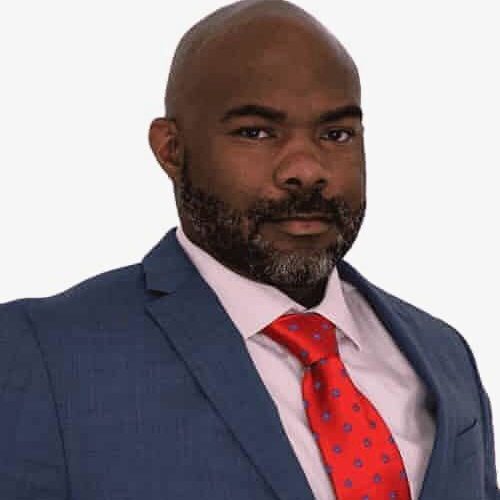You’ll face significant hidden costs in addiction treatment beyond advertised rates, with 2025 projections showing 40-60% increases due to administrative fees and facility charges. Initial assessments can reach $4,000, while daily intensive outpatient care runs $500-$650. Insurance verification fees, maintenance charges, and undisclosed facility costs further inflate expenses. Understanding these concealed charges and coverage limitations will help you prepare for the true financial commitment of recovery treatment.
Behind-the-Scenes Costs of Residential Treatment Programs

While residential addiction treatment programs often advertise base rates for their services, the true financial burden extends far beyond the marketed costs. You’ll face substantial daily detox fees averaging $878 for medical supervision, plus separate charges for medication management and emergency interventions. The detox duration profoundly impacts your total expenses, especially in luxury facilities with premium amenities that can push costs to $75,000+ monthly. Studies show that dual diagnosis care typically increases overall treatment costs beyond standard programs. Many facilities under private equity ownership have eliminated previously free services in favor of fee-based offerings.
Consider the mandatory upfront deposits ranging from $3,000 to $4,000 for intake assessments, along with specialized therapy sessions costing $100-$300 each. Nearly half of all facilities require partial or full payment before admission, creating additional barriers to accessing treatment. Facility amenities dramatically influence pricing, with for-profit centers averaging $1,211 daily compared to $395 at nonprofits. You’ll also need to budget for aftercare requirements, typically adding $500-$1,200 monthly to your treatment expenses.
Understanding Insurance Coverage Limitations and Gaps
Medicare’s complex coverage restrictions create substantial financial barriers for individuals seeking addiction treatment, particularly for residential and intensive outpatient services. You’ll find significant insurance loopholes, as Medicare doesn’t cover non-hospital residential treatment or community-based detox services, forcing many beneficiaries into costlier hospital settings. With opioid overdose deaths reaching their peak among those 65 and older, these coverage gaps have become increasingly critical. Less than 16% get treatment for opioid use disorder among Medicare beneficiaries, highlighting a severe access problem.
Major coverage disparities exist between Medicare and Medicaid programs. While Medicaid covers community-based and residential care in 38 states, Medicare excludes these essential services. The new annual $2,000 cap on Medicare Part D out-of-pocket costs provides some financial relief for prescription medications used in addiction treatment. You’re also likely to encounter strict limitations on where you can receive intensive outpatient treatment, as Medicare only allows services through specific facilities like opioid treatment programs and community mental health centers. Unlike private insurance plans that must comply with parity laws by 2025, Medicare’s exemption means you’ll face continued restrictions on behavioral health services.
The Real Price Tag of Outpatient Services

How much does outpatient addiction treatment really cost? When exploring outpatient alternatives, you’ll find the price tag extends far beyond the advertised rates. Financial transparency reveals multiple layers of expenses you’ll need to take into account.
- Initial assessments and admission fees can reach $4,000 before treatment begins
- Daily intensive outpatient care ranges from $500-$650 at private facilities
- Standard 30-day outpatient programs cost between $1,400-$10,000
- Medication-assisted treatment adds approximately $7,000 to your total
- Transportation and administrative fees create additional financial burden
You’ll need to factor in these expenses when budgeting for treatment. California residents typically pay around $8,000 for complete outpatient programs, while specialized options like rapid detox can cost up to $10,000. Based on recent data, 1.36 million patients enroll in outpatient services annually across the United States. Many facilities provide holistic therapies as part of their standard treatment packages without additional charges. Long-term programs may offer discounted rates, though contractual obligations can affect final costs. Many facilities now offer sliding scale fees to make treatment more accessible for patients with varying income levels.
Medication and Therapy Additional Expenses
Beyond the basic program fees, medication-assisted treatment (MAT) and therapy services represent substantial additional expenses in addiction recovery. You’ll need to factor in medication expenses that range from $100 for generic buprenorphine to $1,200 for monthly naltrexone treatments. Therapy costs include individual sessions at $100-$200 per hour and separate group counseling fees. With average treatment costs of $13,475, patients must carefully budget for both core programs and supplementary services. Intensive outpatient programs can reach up to $19,500 monthly for comprehensive care services. Private insurance plans typically require $200 to $500 copays for treatment services.
| Service Type | Basic Cost | Additional Fees |
|---|---|---|
| Buprenorphine | $100/month | Drug testing costs |
| Methadone | $350-450/month | Daily visit fees |
| Naltrexone | $1,200/month | Monitoring charges |
Your treatment may require specialized medications, compliance monitoring, and regular toxicology screenings. While some insurance plans cover up to 60% of these expenses, you should explore cost-saving options like sliding-scale clinics and government assistance programs to manage these significant additional costs effectively.
Hidden Administrative and Facility Fees

Hidden administrative and facility fees compound the already substantial medication and therapy costs in addiction treatment programs. You’ll encounter significant cost variations between for-profit and nonprofit facilities, with private equity-owned centers charging up to three times more than their nonprofit counterparts. The lack of cost transparency often leads to unexpected hidden charges throughout your treatment journey. Many facilities employ security measures to protect sensitive billing information on their websites, making it difficult to research costs beforehand. With residential treatment programs costing between $6,000 to $20,000 for a 30-day stay, understanding the full scope of fees is crucial.
Key administrative and facility fees you should watch for:
- Pre-payment requirements averaging $26,000 monthly for residential treatment
- Undisclosed facility maintenance charges added to daily rates
- Processing fees for insurance verification and paperwork
- Additional charges for luxury amenities not included in base pricing
- Location-based overhead costs that vary between urban and rural facilities
These hidden charges particularly impact those with public insurance or limited coverage, as administrative costs are increasingly shifted to patients through complex fee structures.
Frequently Asked Questions
How Do Treatment Centers Determine Sliding Scale Fees for Low-Income Patients?
Treatment centers determine your sliding scale fees through a thorough financial assessment process. You’ll need to provide income verification documents like pay stubs and tax returns. They’ll evaluate your household size, debt-to-income ratio, and assets to calculate appropriate payment levels. You’ll also be assessed based on the intensity of care you need, with centers considering factors like outpatient vs. inpatient services. Your fees will be adjusted proportionally to your verified financial situation.
What Percentage of Private Equity-Owned Facilities Offer Legitimate Scholarship Programs?
You’ll find it challenging to determine exact percentages since private equity-owned facilities don’t consistently report scholarship data. Based on available research, legitimate scholarship programs vary considerably by facility, with most private equity-backed centers offering limited or conditional aid. When evaluating scholarship eligibility criteria, you should note that private equity involvement often prioritizes profitability over systematic financial assistance. It’s best to verify directly with facilities, as scholarship offerings aren’t standardized across ownership structures.
Are There Hidden Costs Associated With Leaving Treatment Programs Early?
Yes, you’ll encounter significant hidden costs when leaving treatment early. Early discharge penalties typically include non-refundable deposits, prepaid program fees, and full medication charges. Your treatment contract terms may require you to pay exit fees, document preparation costs, and administrative charges. You’re also likely to face insurance complications and potential legal consequences, especially in court-mandated programs. It’s essential to review your contract thoroughly and understand these financial obligations before starting treatment.
Do Facilities Charge Extra for Specialized Trauma-Informed Care Approaches?
Yes, you’ll often find facilities charging additional fees for trauma-informed care and specialized approaches beyond their standard treatment packages. You can expect to pay extra for evidence-based trauma therapies, specialized counseling sessions, and trauma-specific interventions that aren’t typically covered by basic insurance plans. Private equity-backed centers frequently bundle these services with premium amenities, driving up costs. To avoid surprises, you should carefully review all treatment agreements and verify coverage for trauma-specific services upfront.
How Often Do Centers Update Their Fee Structures Throughout the Year?
You’ll find that treatment centers typically update their fee structures quarterly, though annual adjustments are most common. Centers must align with Medicare/Medicaid guidelines, respond to insurance contract changes, and adjust for operational costs. Fee transparency requirements mean you’ll receive notice of these updates. Most facilities conduct thorough annual reviews, but market conditions, medication costs, and staffing changes can trigger more frequent pricing adjustments throughout the year.











